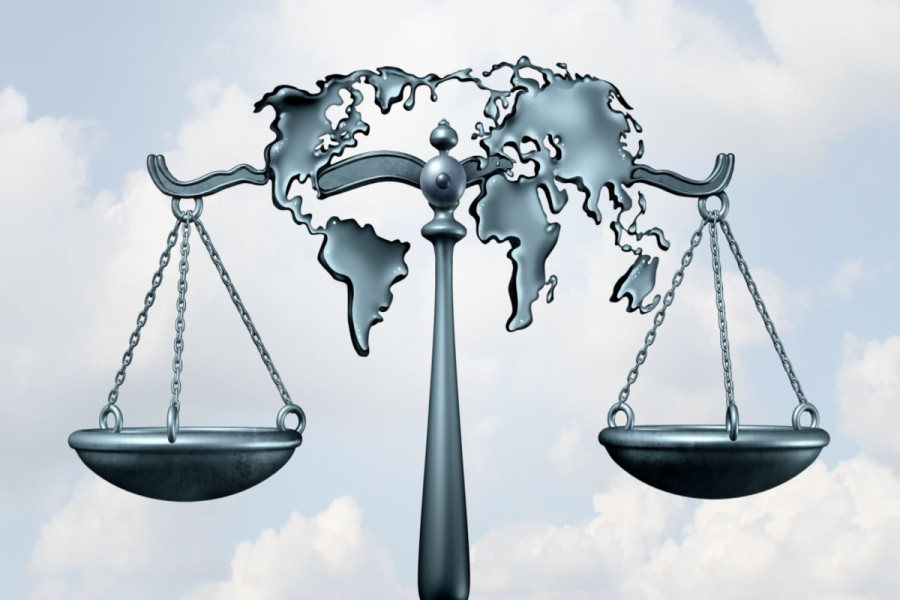Columns
The 1949 Geneva Conventions and Nepal
International humanitarian law has a bearing on Nepal’s stalled transitional justice process.
Krishna Chandra Chalisey
The Geneva Conventions are turning 73 on August 12. The Geneva Conventions and their Additional Protocols are key instruments of international humanitarian law (IHL) which regulate the conduct of armed conflict and seek to mitigate suffering. IHL protects people not taking part in hostilities and those who are no longer taking part. It includes those rules of international law which establish the minimum standards of humanity that must be respected in any situation of armed conflict—be it international or non-international. The Geneva Conventions have been ratified by all states and are universally applicable. Nepal acceded to the conventions on February 7, 1964 paving the way for the creation of the Red Cross in Nepal. The First Geneva Convention protects wounded and sick soldiers on land during war. The Second Geneva Convention protects wounded, sick and shipwrecked military personnel at sea during war. The Third Geneva Convention applies to prisoners of war. The Fourth Geneva Convention protects civilians, including those in occupied territories.
We have heard and read a lot about the Geneva Conventions and their implementation in Nepal during the Maoist insurgency, 1996-2006. As Nepal was not a party to the protocols of the Geneva Conventions, it was only the common article 3 applicable in non-international armed conflict between the government of Nepal and the Communist Party of Nepal (Maoist). Article 3 is a treaty in miniature that encapsulates IHL. This article has gained a form of customary law. Nepal is yet to accede to the Additional Protocols of the Geneva Conventions of which the Second Protocol is applicable in non-international armed conflict. It offers enhanced protection to the affected population and regulates conduct of hostilities. Applicability of the common article 3 in Nepal’s conflict was formally accepted by the then government led by Surya Bahadur Thapa on March 26, 2004 by issuing a 25-point commitment. It also included a commitment to respect other relevant principles of IHL and international human rights law.
Non-international conflicts
The 1977 Additional Protocols were developed to bridge the gaps that were felt while implementing the four Geneva Conventions in the context of war or armed conflict. The First Protocol comprehensively deals with the means and methods of warfare in international armed conflict. The Second Protocol also touches upon the means and methods of warfare, and it is of specific significance considering the non-existence of IHL provisions regulating non-international armed conflict in the Geneva Conventions except the common article 3. As about 80 percent of the victims of armed conflicts since 1945 have been victims of non-international conflicts, there is a real need to develop further the rules applicable in times of non-international armed conflict. The study undertaken by the International Committee of the Red Cross on customary IHL in 2005 at the request of the International Conference of the Red Cross and Red Crescent established that a majority of the rules are applicable in both situations of conflict. Out of the 161 rules, 147 are applicable in non-international armed conflict. The study proved useful to invoke those rules where treaty provisions do not exist. Nepal went through the situation of non-international armed conflict for a decade and subsequent protracted transition resulting in human casualty, disappearance, trauma, loss and damage. Learning from the past, it is high time for Nepal to consider acceding to both protocols.
It has been 58 years since Nepal became a party to the Geneva Conventions. Nepal is yet to enact implementing legislation. We need implementing legislation to prosecute violations of IHL at home. The Geneva Conventions have adopted the principles of universal jurisdiction. We would need national law to exercise such jurisdiction. The National IHL Committee, an inter-ministerial body chaired by the Ministry of Law, Justice and Parliamentary Affairs to promote IHL and advise the government on IHL issues, has prepared a draft Geneva Conventions Act. The finalisation of the draft remains pending since long.
The National Penal (Code) Act 2017 includes some of the crimes that fall under IHL—genocide, arms and ammunition, landmines, torture and enforced disappearance. However, these are not sufficient. The Geneva Conventions and Additional Protocol (I) oblige the states to enact legislation necessary to provide effective penal sanctions for persons committing, or ordering to be committed, any of the grave breaches of the conventions. The grave breaches include acts committed against persons or property protected by the convention—wilful killing, torture or inhuman treatment, including biological experiments, wilfully causing great suffering or serious injury to body or health, and extensive destruction and appropriation of property, not justified by military necessity and carried out unlawfully and wantonly. It is expected that the government of Nepal will enact the Geneva Conventions implementing law at the earliest.
World Wars I and II
The Geneva Conventions have evolved over time. They have been influenced very much by the First and Second World Wars as well as other wars. The means and methods used by the warring parties and consequent loss necessitated further development of the laws of war. The First World War led to the codification of the Third Geneva Convention in the absence of adequate rules to protect prisoners of war. A similar situation led to the codification of the Fourth Geneva Convention to protect civilian populations in the aftermath of the Second World War. The evolution of guerrilla warfare and waves of liberation from colonial regimes across the globe led to the adoption of the Additional Protocol (I). With limited rules governing the situation of non-international armed conflict, we now have the Additional Protocol (II) adopted in 1977.
IHL has a bearing on the conclusion of Nepal’s stalled transitional justice process. Despite the creation of twin mechanisms to look at missing/disappearance and truth and reconciliation in 2015, the victims are yet to receive justice and reparation. There is a need to amend the law considering the decisions of the Supreme Court, recommendations of the international community and concerns of the conflict victims. The on-going process of amending the law is expected to consider those points. IHL is a reference law together with international human rights law in the investigation and adjudication process of transitional justice. As IHL is a lex specialis in a situation of armed conflict, there should be due space for IHL to conclude the transitional justice process.




 16.12°C Kathmandu
16.12°C Kathmandu















